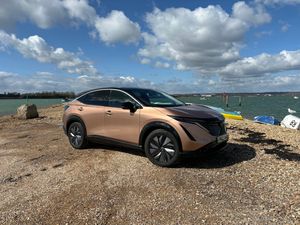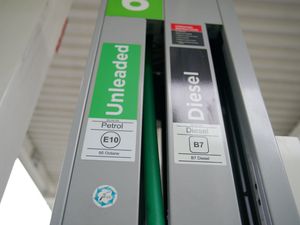Long-term report: Is the Nissan Ariya an ideal battery-powered option?
The Ariya is Nissan’s latest electric vehicle – so it’s packed with features and in-car technology.

There’s a lot going on in the world of Nissan at the moment. As I write this, the Japanese manufacturer has just unveiled its new Qashqai, a little over three years after the third generation of its family crossover went on sale.
In addition to all that, we’re rapidly approaching the second UK anniversary of another key car in the Nissan range – the Ariya, an example of which has recently joined our fleet of long-term loan vehicles.
Having had some experience driving an electric Nissan in the past (a Leaf hatchback, quite a few years ago), I’ve been very interested to see how Nissan has moved the game on in terms of electric motoring.

For those unfamiliar with the Ariya, it’s essentially an electric crossover, designed to offer the practicality of a regular SUV, and the space, comfort and style of a premium city car.
With plenty of room for the whole family (I’ve put it to the test with a full complement of passengers on more than one occasion) and a 250-mile range that’ll take you where you need to go, I’ve found that OW22AAO ticks a lot of boxes.
It has a nice, sleek shape and a luxurious, lounge-like interior, and there are tasteful nods to the car’s Japanese heritage included within the fixtures and fittings.
Our particular Ariya is equipped with the smaller of the two battery sizes available, with a usable capacity of 63kWh. This should mean that a range of up to 250 miles is typically available on the combined cycle, and although I haven’t quite tested the car to the limit as yet, journeys of 200+ miles are certainly possible.

As I’ve mentioned, I do have a bit of EV experience, so perhaps it’s no surprise that I’ve found charging relatively straightforward.
The number of public charging points is increasing all the time. If I’m out and about, I tend to head for BP Pulse ones if I can. It seems as though there are plenty of them around and the associated smartphone app is easy to use.
At home, I am now the proud owner of a Pod Point Solo 3 charger, kindly installed by an electrician in the family, my future son-in-law Marcus. (Thank you!)
Despite slight initial trepidation about whether everything would work okay, it has proved simple to use. The Pod Point app enables me to manage the car’s charging schedule, match it with our energy tariff and keep track of the costs involved. Far from daunting, this is actually fascinating to do and has almost become like a new hobby!

As I’ve said, our Ariya has the smaller of the two battery sizes in the range. And as an ‘Advance’ trim level model, it’s one step up from Engage, the entry-level option.
With a price of £43,145, it boasts a couple of optional extras, namely its Akatsuki Copper paint job plus Pearl Black roof at £1,275; and a Sky Pack (in other words, an electric panoramic sunroof) costing £1,295. This makes the total price of our particular model £45,715.
Any negatives during our first couple of weeks behind the wheel? Well, just one, but the car is blameless to be fair. A puncture sustained on a rough road surface a few days after collection proved annoying but was speedily sorted with the help of the RAC and Kwik Fit.
There’ll be time to explain more about living with our Ariya in future reports, and I’m learning more about its tech and convenience features all the time.
But for now, welcome to the fleet, OW22AAO – and I’ll try harder to avoid local potholes in future.





